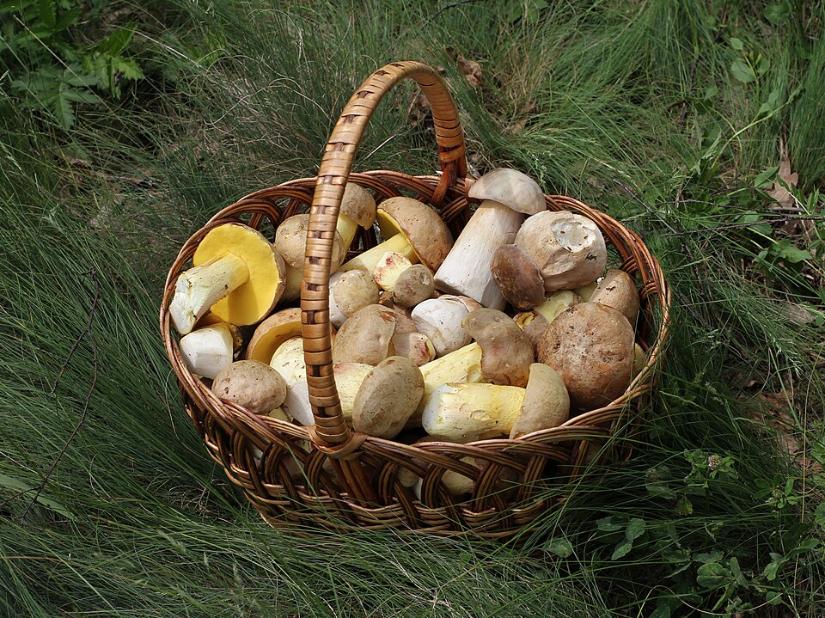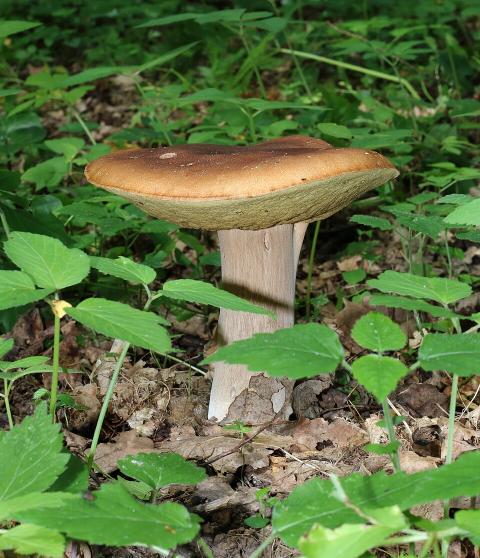
Timelines 10
Man and his Senses 10
Man and his Inventions 10
Geography 10
Fauna 10
Timelines 10
Man and his Senses 10
Man and his Inventions 10
Geography 10
Fauna 10

By the end of the twentieth century, two very different cultures — one a small central European republic of foragers and design studios, the other a vast subcontinental economy of farmers and laboratories — had come to prize fungi for reasons that overlap and diverge: food, health, livelihoods and, increasingly, sustainability. The Czech Republic still treats mushroom picking as a national pastime; India treats mushrooms as a growing cash crop and a subject of scientific inquiry. Taken together, their stories sketch a contemporary portrait of fungi as a bridge between tradition and innovation.
In Czechia the mushroom is a civic pastime and a culinary tradition. For many Czechs, gathering porcini — Boletus edulis — is not merely food collection but a seasonal ritual. Media reports on the subject capture a social practice in which foraging is widespread; reports cite a remarkably high prevalence of experience with mushroom picking among the population, and describe how forests and family outings sustain culinary knowledge from generation to generation. The significance of Boletus edulis runs beyond the pot: it is a species famed for its flavour, broadly called porcini, and one that field guides note is wild and difficult to cultivate at scale. Its cultural status helps explain why knowledge about mushrooms is threaded through daily life in Czech households — from which species are safe to pick to how they are prepared at the table.
Yet Czechia’s relationship to fungi is not frozen in tradition. Architects and material scientists have turned mycelium — the vegetative network of fungi — into an experimental building material. A recent demonstration project in the country presented what press outlets called a fungus-based house: a prototype glamping cabin built largely from mycelium composite. The project was small and specific: teams reported using roughly 1,800 kilograms of mycocomposite to fashion a structure of about 3.5 by 7 metres. Its promoters suggested that mycelium panels offer insulation comparable to polystyrene and that the material promises a lower-impact alternative at end of life. These claims are promising but preliminary: public coverage emphasises the demonstrative character of the experiment, while technical testing — standardized R-values, fire testing, long-term moisture performance and lifecycle carbon accounting — remain outstanding. In short, Czech innovation treats fungi as both a cultural artefact and as a material technology, useful for culinary life and for rethinking what buildings might be made from.
India’s story begins with mushroom farms, market linkages and a distinct research agenda. Unlike the foraging culture of Czechia, India’s mushroom sector is focussed on industrialising: button, oyster and milky mushrooms are the commercial mainstays, grown and sold as fresh produce and as processed goods to meet a rising appetite for convenient, healthier food. Market studies describe a sector that is expanding as urban diets change and health consciousness rises; mushrooms have thus moved from niche crop to mainstream cash crop in many regions. The economics are straightforward: mushrooms yield relatively quickly, occupy small footprints relative to many field crops, and fit into cold-chain and retail circuits with modest postharvest loss when properly handled. Market analyses flag steady growth and identify segments — fresh versus processed, wholesale versus retail — that investors and extension agencies now watch closely.
Scientific interest in India takes two forms. First, agronomy: producers need reliable spawn, climate-sensitive cultivation methods, and pest management solutions tailored to local strains. Second, pharmacology: several Indian fungi traditionally used in medicine — notably Ganoderma and species of Phellinus and Pleurotus among others — have attracted laboratory study for antioxidant and antitumour activity. Reviews of medicinal fungi show a familiar pattern: a catalogue of bioactive classes — polysaccharides, terpenoids, lectins — with strong biological plausibility in cell and animal models, and a thin body of small, varied human trials. Earlier reviews mapped antioxidant and antitumour assays in Indian species and urged further standardised research; more recent reviews reached a similar conclusion globally: pharmacological promise in abundance, robust clinical proof far less so. The takeaway is cautious optimism — the molecules exist and perform in the lab, but translation to proven therapies demands larger, better-controlled human trials and standardised extraction and dosing protocols.
The meeting point between Czech experimentation and Indian market momentum is technology. In India, practitioners are already exploring how Artificial Intelligence can transform mushroom cultivation. Recent practical primers describe workable use-cases: sensors to monitor microclimate and CO₂; computer-vision systems to detect disease or maturity in fruiting bodies; predictive models that forecast yield from temperature, humidity and substrate data; and automation for tasks that are labour intensive, such as precise harvesting and sorting. These are not fanciful claims. They are practical steps for pilot projects: set up sensors, train vision models on labelled images of healthy and diseased mushroom caps, test predicted yields against observed harvests, and measure labour savings. What remains to be weighed in every case are local constraints — the cost and maintenance of sensors, data connectivity in rural areas, farmer literacy with digital tools and the capital cost of mechanised harvesting.
There is a caution about big numbers. Press coverage in India has occasionally repeated very large estimates of global fungal diversity — figures that read as millions of species — and regional roundups sometimes condense survey results into headlines. Such estimates are usually extrapolations from sampling models, not direct counts, and their meaning depends on methods and taxonomic effort. For practical policy and farm planning, the immediate concerns remain more modest: how to increase supply chains for commercial strains, how to formalise quality control for medicinal extracts, and how to pilot AI and materials experiments so that benefits are real and reproducible.
If there is a common lesson across Prague’s woodlands, Czech experimental workshops, Indian farms, and Indian laboratories it is this: fungi occupy a rare cultural-technological middle ground. They are a staple of old kitchens and a driver for new industrial niches. They connect forests and markets; they yield spores and spawn, recipes and research papers. For Czech society, that means preserving and celebrating a practice of forest knowledge even as mycelium is recast as a building material. For India, it means marrying agronomy and science to market dynamics and to emerging digital tools. Between them, the two nations offer a compact manual for how a world might take mushrooms seriously — not only as food but as medicine, material, livelihood and, above all, as an object of sustained, evidence-driven curiosity.
Sources:
https://tinyurl.com/2azrl8u5
https://tinyurl.com/2bfvfhn7
https://tinyurl.com/ldeouoh
https://tinyurl.com/2c3aev98
https://tinyurl.com/29nxuegr
https://tinyurl.com/2bdrd5g2
https://tinyurl.com/2b6sgrp6
https://tinyurl.com/2b6sgrp6
https://tinyurl.com/29nxuegr